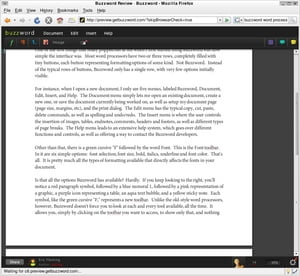Standardized testing has altered education in a major way. Teachers now find themselves teaching to 10 standards when there are really 35, just because those 10 standards are the ones tested. Administrators push educators to spend as much time as possible drilling these kids on vocabulary, concepts and strategies for taking multiple choice tests. There are meetings where educators discuss graphs and charts that document each kid’s strength and weakness. The goal? Passing the test.
Enter the Bubble Kids.
“Bubble kids” is a buzzword that is very popular and widely used among educators. Generally, it means the kids who are not quite in the passing window when they take the pre-test, but who can most likely make the cut off to pass by the state test date. Therefore, they are the group that gets the most attention during the school year. For instance, they may be given special small group instruction to ensure they pass, and therefore bump up the passing numbers for the school.
A 2007 study done by Derek Neal and Diane Whitmore Schanzenbach backed this theory by looking at test scores of gifted students, “bubble” students, and lower achieving students. The researchers found that the only students whose score had changed since the passing of No Child Left Behind were those who are on the cusp of passing; the “bubble kids.”
While this extra attention seems perfect for these students who do actually need it, there are two populations of students who miss out on extra attention due to the amount of attention that the “bubble kids” get. The gifted students, students who will pass the test regardless, and the students who are very academically needy, will most likely not get as much extra attention as they deserve. Instead, these kids are often pushed aside. For example, if a school offers an extra class for reading, the “bubble kids” may have the chance to take this class, whereas kids who are really struggling may not. Those kids may need “too much help,” and therefore, an extra reading class will not be helpful. These are the kids who need one-on-one support and often times, that is not available.
Often, educators, in their haste and directed motivation, focus on a small group of kids who can help the school pass its goal. This unintended consequence of No Child Left Behind ignores two thirds of the student population. This consequence is most likely to be felt in lower income educational institutions that have the least amount of money for individualized programs. Regardless, it is an issue that needs to be examined more closely. While these “bubble kids” deserve the attention they are getting, the children who are academic emergencies or who are gifted, are, unfortunately, often ignored.
Bubble Kids Benefit, 2007. Retrieved on: March 29, 2012




